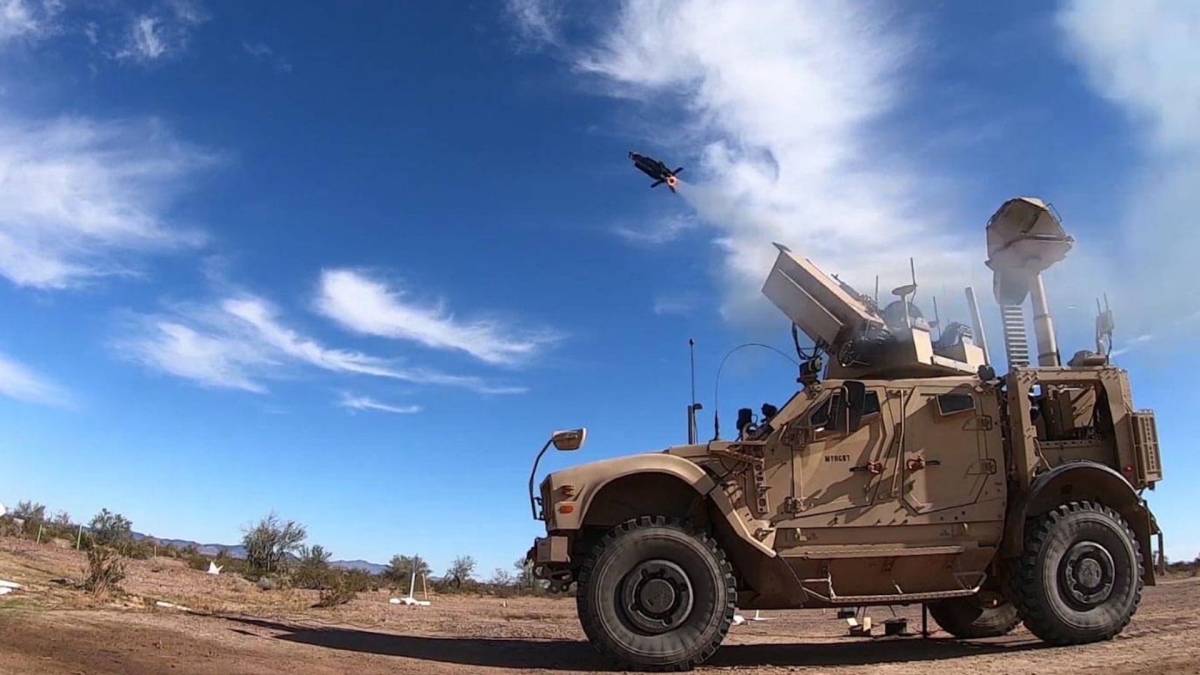Army awards big contract for Coyote interceptors amid growing demand for counter-drone weapons

Raytheon has received another large contract from the Army for its Coyote interceptors, one of the latest moves in the service’s effort to expand its arsenal of counter-drone systems.
The $197 million cost-plus-fixed-fee deal was announced Thursday evening by the Defense Department as part of its daily list of major contract awards. Bids were solicited via the internet and one was received, according to the Pentagon. The estimated completion date for the work is Sept. 30, 2027.
Army leaders are keen on Coyote weapons as a mean of protecting soldiers from adversaries’ unmanned aerial systems, which have become a growing threat on modern battlefields as American troops and others have come under attack from kamikaze drones and other platforms, including in the U.S. Central Command area of responsibility in the Middle East.
Earlier this year, the service awarded a $75 million contract to RTX Corp., the parent company of Raytheon, to produce 600 Coyote Block 2C interceptors.
Thursday’s announcement about the new, nearly $200 million deal didn’t say how many interceptors were included or which variants. DefenseScoop has reached out to the Army seeking that information. RTX officials referred DefenseScoop to the Army for those details.
“We continue to see growing demand for our Raytheon Coyote family of effectors, which offer a low-cost and highly effective solution for defeating unmanned aircraft systems. Coyote can defeat multiple targets, singles and swarms, demonstrating reduced engagement timelines to defeat various threats,” Bill Darne, director for counter-UAS and short-range ground-based air defense requirements, capabilities and solutions at Raytheon, said in a statement.
Army officials have described the Coyote as a key component of its counter-drone “system of systems.”
The ground-launched, radar-guided interceptor — which comes in kinetic and non-kinetic variants — “integrates into fixed site-low, slow, small-unmanned aircraft system integrated defeat systems and mobile-slow, small-unmanned aircraft system integrated defeat systems,” the Army said in a release in January.
The term “kinetic,” in U.S. military parlance, generally refers to missiles or other traditional types of weapons that directly strike their targets. Non-kinetic capabilities like electronic warfare, high-power microwaves and high-energy lasers, offer alternative ways of thwarting enemy platforms.
Looking ahead, the estimated production requirement for Coyote-related capabilities in the fiscal 2025-2029 time frame is a minimum quantity of 6,000 kinetic interceptors, 700 non-kinetic interceptors, 252 fixed-site launcher systems, 25 mobile launcher systems, 118 fixed-site Ku-band Radio Frequency Sensors (KuRFS) and 33 mobile KuRFS, according to a notice posted on Sam.gov in December 2023.
The Army’s fiscal 2025 budget request, released in March, sought $116.3 million to procure Coyote interceptors.
“We’ve been developing counter-UAS systems for a number of years and fielding a lot — primarily to Centcom. The Coyote missile, for example, was started as a counter-UAS missile. That’s one of the most effective ones we have right now. So you will see additional funding for those things,” Doug Bush, the Army’s acquisition chief, told DefenseScoop during a budget preview with reporters.
In May, the service released to industry a request for information related to a future increment of its maneuver short-range air defense (M-SHORAD) capability. Among the characteristics sought are the ability to support mounted and dismounted operations with multiple effectors — including interceptors like the Coyote — and sensors integrated on a single platform or “manned/unmanned pairs.”



